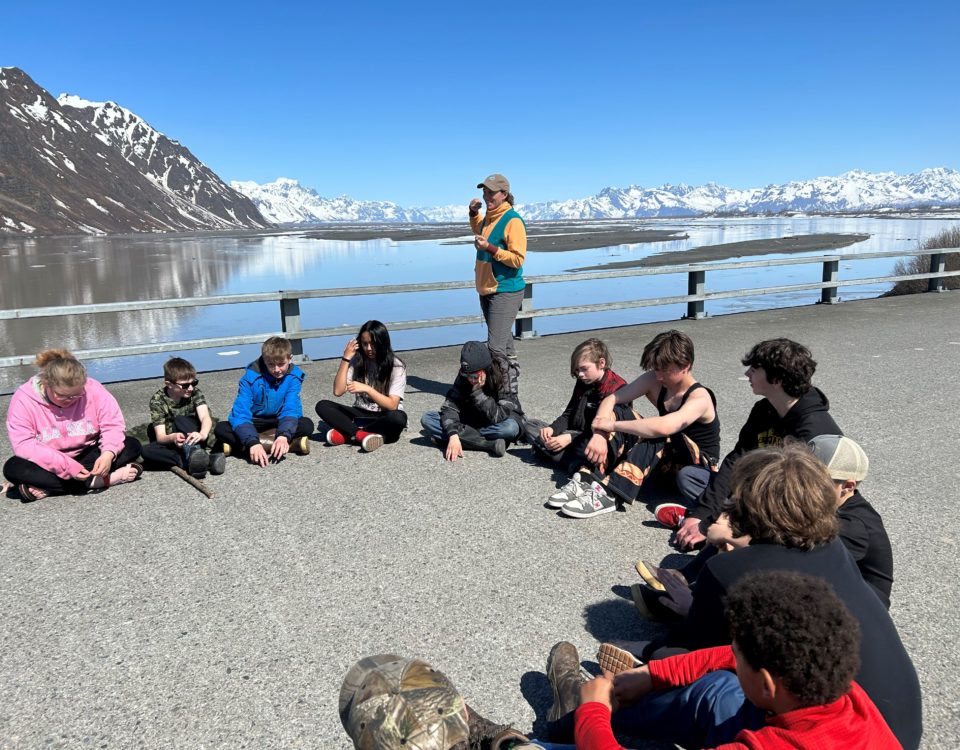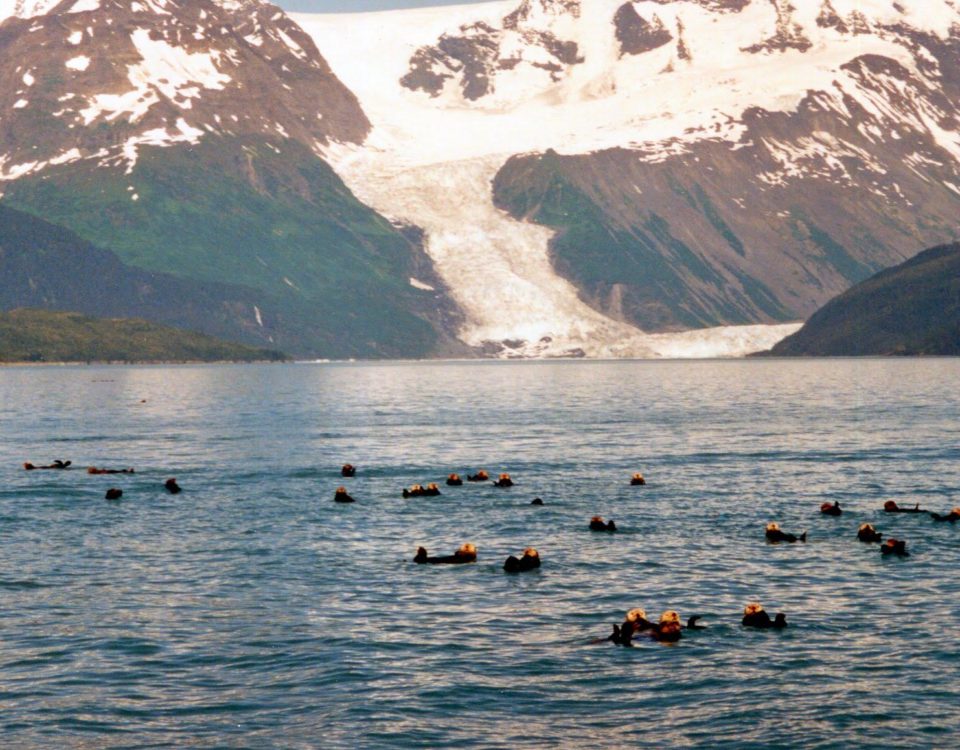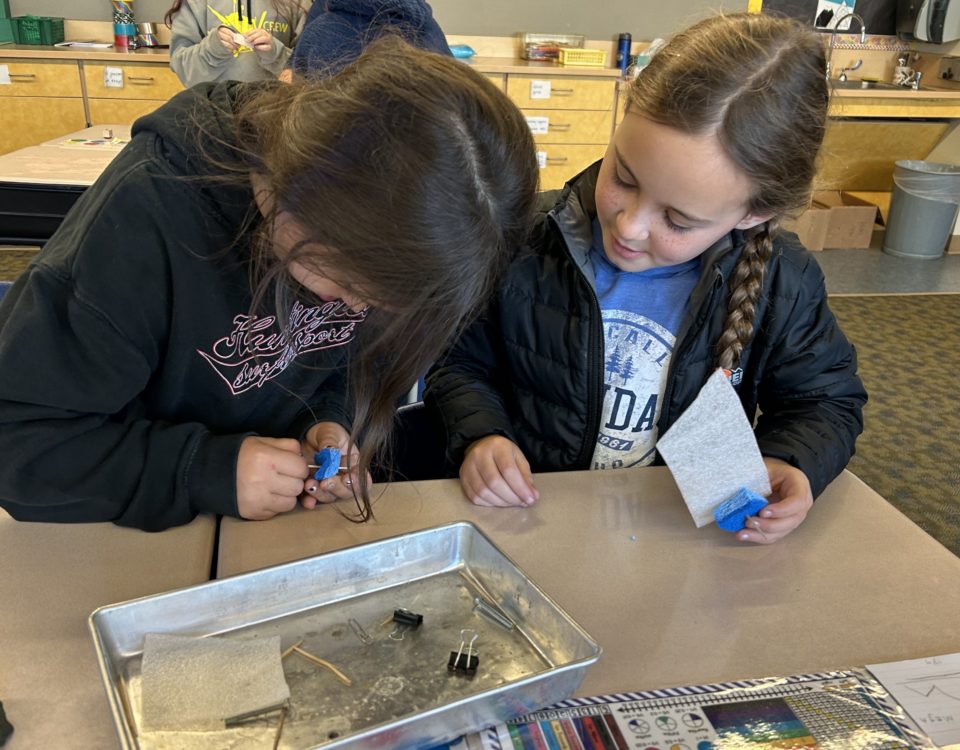Education Month in Review: February 2023

By Cristina Reo
February is the shortest month of the year, but that did not stop our education team from providing an abundance of educational opportunities for people of all ages. We wiggled our way into February with all things ice worm in celebration of the Cordova’s Ice Worm Festival. During our Sea Squirts program, kids imitated ice worms in the ice worm races. They also made gooey ice worms. Families with children in kindergarten through 4th grade explored glaciers during Fun Friday. Adults battled for first place in the trivia arena, during PWSSC’s Ice Worm Trivia at the Reluctant Fisherman. Given the lack of research on the ice worm, and the participants voracious reading, it was a close game!
After the Ice Worm Festival, we transitioned into Mariculture Month. Thank you for following along on our social media channels as we learned about kelp and oyster farming in our region. We are proud to celebrate the different forms of mariculture in Cordova which help feed our communities, sequester carbon, and develop economic opportunities. We also hosted various mariculture events including Fun Friday: Kids ‘n Kelp. With the help of Skye Steritz, from Noble Ocean Farms, kids explored kelp in a touch tank and learned about kelp anatomy and why it is important to their survival. Kids also made model oysters and participated in a mariculture obstacle course. (Check out the mariculture obstacle course on our YouTube page!) During kelp nature yoga, one of our local yoga instructors, Aviva, helped participants learn the importance of “holding fast” at the core while letting their body go with the flow.
Caitlin McKinstry of the Native Village of Eyak discussed Alaskan Mariculture and NVE’s Mariculture program during Tuesday Night Talks at the beginning of the month. Other Tuesday Night Talks in February included Dr. Alysha Cypher from the Science Center discussing the effects of oil on herring along with a special presentation from Dr. Julia Parrish about the research of The Coastal Observation and Seabird Survey Team (COASST). Speaking of COASST, Dr. Julia Parris also hosted a training session at the Science Center on February 25, to teach volunteers from our community how to monitor Cordova beaches.
February also brought about Valentine’s Day. We celebrated with an Animal Love Quiz Crawl at three local restaurants. Participants learned a bit about animal courtship, mating, and kinship while they waited for their food at local eateries. Participants also had the opportunity to compete for Science Center sweatshirts by taking a quiz on their phone. To view the quiz questions and answers, click here. We would love to give a round of applause, and two sweatshirts, to our Quiz Crawl winner Noelle Camaren. Honorable mention to second place winner Erin Cole and third place winner Mary Tran.
The final installment of our winter astronomy series wrapped up with constellation games, movements, and crafts. Thank you to Marita Kleissler of Current Rhythms for partnering with us to bring movement and art into science exploration.
In addition to all the community programs, the Science Center visited our local schools for Discovery Room and T3 programs.
- Kindergarten students learned about different types of clouds through a counting experiment and playdough.
- First grade mastered sound waves and has moved on to exploring light waves. They learned about the word illumination and created models of the human eye.
- The hydroponic systems are up and running in the 2nd grade classroom. Kids are counting down the days till they get to crunch on their fresh lettuce. They rounded out the month by learning about pH so they can more closely monitor their plants.
- Third graders visited the Science Center where they were treated to a tour, met scientists, and practiced dissecting model bird stomachs like a scientist. (See image above for students in a bird blind practicing using binoculars.)
- With the help of Rachel Ertz from ADF&G, the fourth grade dissected herring. They used all the tools that scientists would as they explored different parts of the herring’s external and internal anatomy.
- Fifth grade took their knowledge of food webs to the next level by observing the dynamics of the energy pyramid in their school yard. Then they modeled the energy pyramid in a fun, although messy, relay race.
- The sixth-grade classroom was transformed into a mock SERVS headquarters. With the help of Google Earth and some awesome PPE “costumes,” students learned about the logistics of coordinating an oil spill cleanup.
- The Teaching Through Technology (T3) group at the junior/sr. high school learned about light and cameras throughout the month and concluded their experience with a nighttime photography expedition.
- The high school art class has been working with the Science Center to combine art and conservation. Students painted trash cans which will be placed around town to collect plastic recycling for a future marine debris awareness sculpture.
The education staff is looking forward to seeing you this March for more events. Check our calendar here.




